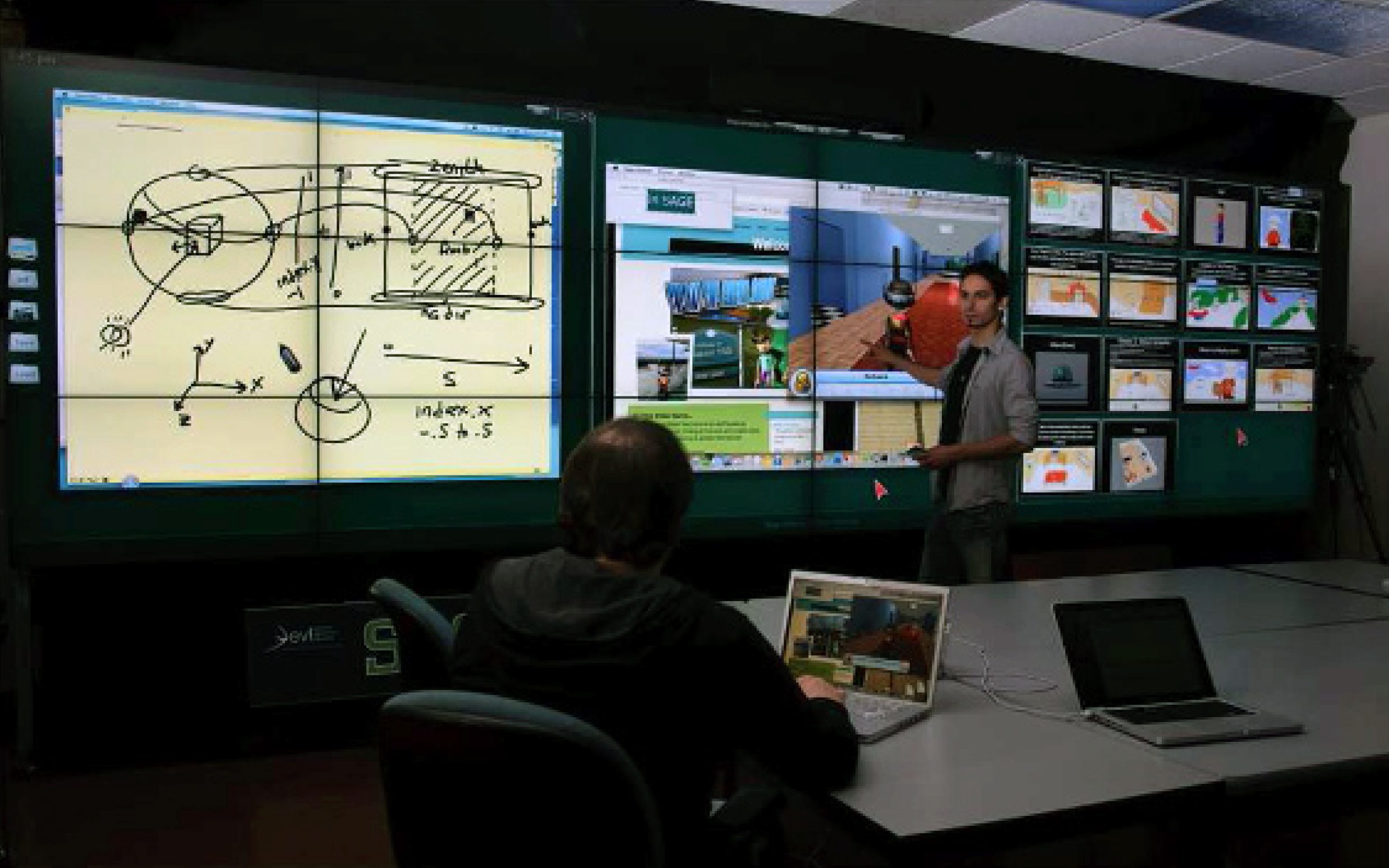The Future of the CAVE
November 2nd, 2010
Categories: Devices, Multimedia, Tele-Immersion, User Groups, VR

Authors
*About
* Authors: DeFanti, T.A., Acevedo, D., Ainsworth, R.A., Brown, M.D., Cutchin, S., Dawe, G., Doerr, K., Johnson, A.E., Knox, C. Kooima, R., Kuester, F. Leigh, J., Long, L., Otto, P., Petrovic, V., Ponto, K., Prudhomme, A., Rao, R., Renambot, L., Sandin, D.J., Schulze, J.P., Smarr, L., Srinivasan, M., Weber, P., Wickham, G.
The CAVE, a walk-in virtual reality environment typically consisting of 4-6 3m-by-3m sides of a room made of rear-projected screens, was first conceived and built in 1991. In the nearly two decades since its conception, the supporting technology has improved so that current CAVEs are much brighter, at much higher resolution, and have dramatically improved graphics performance.
However, rear-projection-based CAVEs typically must be housed in a 10m3 room (with space behind the screen walls for the projectors), which limits their deployment to large spaces. The CAVE of the future will be made of tessellated panel displays, eliminating the projection distance, but the implementation of such displays is challenging. Early multi-tile, panel-based, virtual-reality displays have been designed, prototyped, and built for the King Abdullah University of Science and Technology (KAUST) in Saudi Arabia by researchers at the University of California, San Diego, and the University of Illinois at Chicago. New means of image generation and control are considered key contributions to the future viability of the CAVE as a virtual-reality device.
Keywords: CAVE, Computer-supported collaborative work (CSCW), Graphics packages, Image displays, Immersive environments, Interactive environments, Sonification, Tele-immersion, Virtual reality, Scalable multi-tile displays.
Resources
Citation
*, The Future of the CAVE, Central European Journal of Engineering’s Online First, Versita with Springer-Verlag GmbH, November 2nd, 2010.